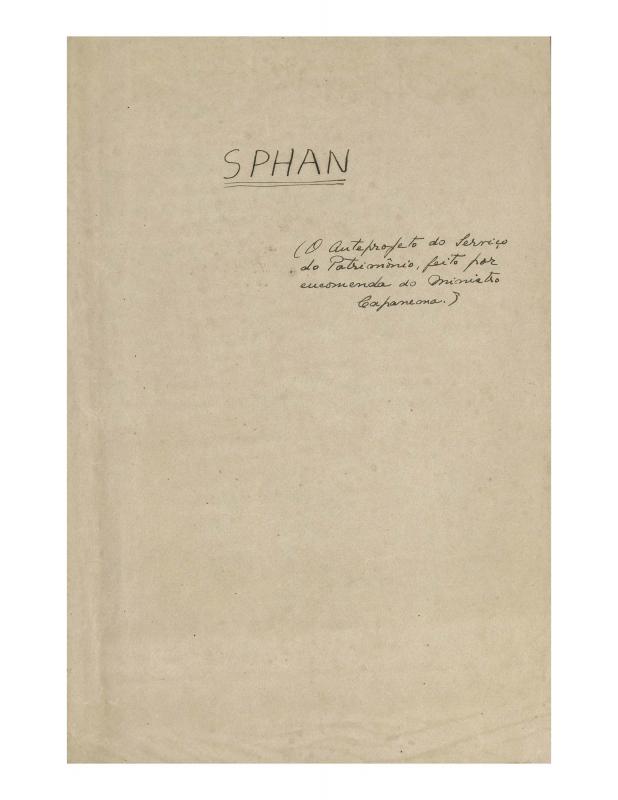This letter seeks to sound out an alliance of strategic interests that might be relied upon to promote the correct operation of public projects and the strengthening of organizational structures within cultural institutions. The letter was written in support of and in solidarity with the campaign launched by the newspaper O Estado de S. Paulo in 1937, “Contra o Vandalismo e o Extermínio.” The author’s goal is to revitalize the Instituto Histórico e Geográfico de São Paulo, which had become a shadow of its former self. According to the recipient, Paulo Duarte, de Andrade’s letter was important because it exposed the underlying cultural orientation of Brazilian modernism while Mário de Andrade (1893–1945) was the director of the Ministry of Culture (1935–1945), an institution founded with Duarte’s unconditional support.
Mário de Andrade authored the draft for the internal structuring of SPAN (Servicio del Patrimonio Artístico Nacional) [National Artistic Heritage Service], the entity that oversees eight categories of artistic activities: archeological art, Amerindian art, popular art, historical art, national scholarly art, foreign scholarly art, national applied arts, and foreign applied arts. [See ICAA digital archive, doc. no. 781826]. This draft was used as the guide for creating SPHAN (Servicio del Patrimonio Histórico y Artístico Nacional) [National Historical and Artistic Heritage Service], an organization directed by Rodrigo de Mello Franco de Andrade from 1938 to 1967.
It would be difficult to sum up in just a few words the legacy and the writings of Mário de Andrade, who was a folklore researcher, cultural administrator, art critic, poet, and musicologist. In addition to his creative works, de Andrade was the driving force behind the internal structuring of SPAN (Servicio del Patrimonio Artístico Nacional), and a key figure in the group that was involved in the 1922 Semana de Arte Moderna. He was a prolific writer whose works were widely published in Brazilian periodicals and whose subjects included history literature, music, folklore, and photography, a field he practiced himself.
“Contra o Vandalismo e o Extermínio” was a campaign championed by the Brazilian journalist, attorney, and anthropologist Paulo Duarte (1899–1984), a pioneer in the protection of archeological sites in Brazil. In 1935, two years after this letter was written, Duarte, Mário de Andrade, and Sérgio Milliet cofounded the Departamento de Cultura e Recreação da Prefeitura Municipal de São Paulo. In 1937, the Estado Novo government exiled Duarte in response to several of his public statements. He returned to Brazil in 1945 (at the end of the first Getúlio Vargas regime) and started work on archeological digs with foreign support. In 1952, he established the Comissão de Pré-História de São Paulo as part of the USP (Universidade de São Paulo. The democratic Juscelino Kubitschek government invited him to draft a law to protect the country’s archeological heritage, which led to the 1961 law, number 3924, which to date, is considered the standard for such matters. In 1969, his public and political stances once again incurred the displeasure of the military dictatorship (1964–1985). He was exiled and never returned to Brazil.

